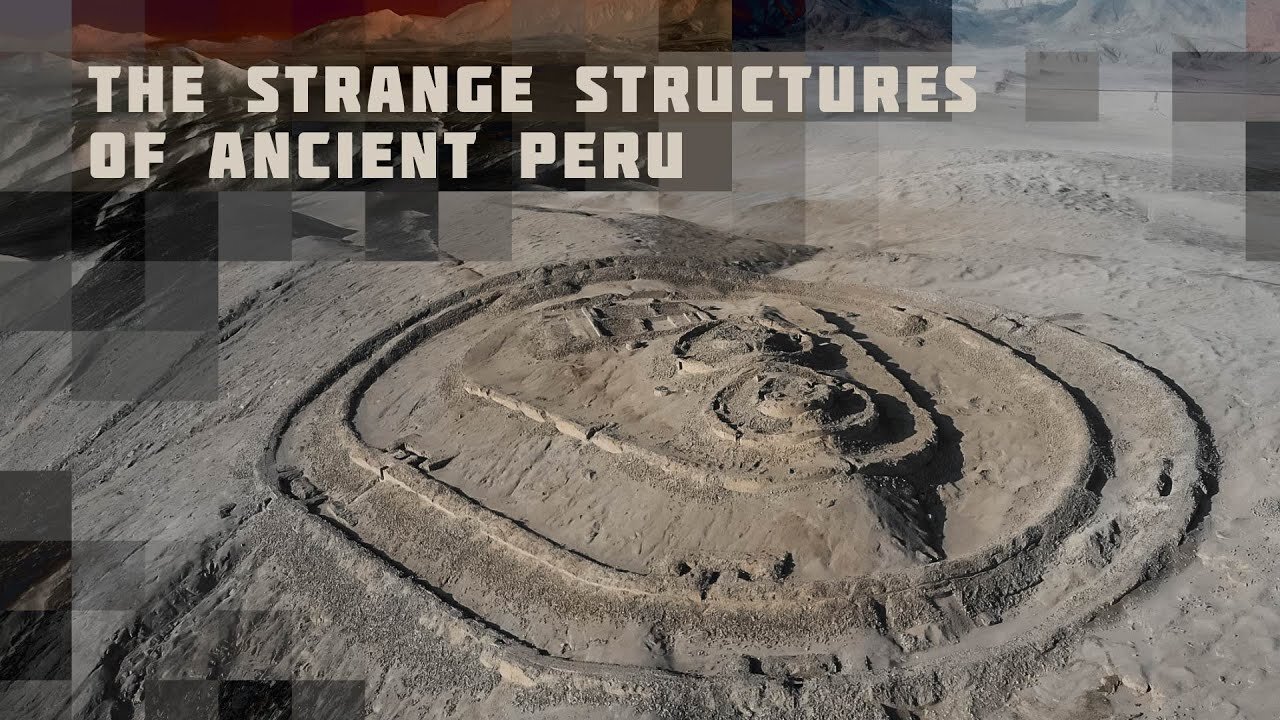Premium Only Content

The Strangest Structures of Ancient Peru
In 1911, while on an expedition in Peru, explorer Hiram Bingham famously stumbled into Machu Picchu, rediscovering the ancient city after being forgotten for 500 years. In the mid-1920s, military and commercial pilots flying over the southern part of the country were the first modern men to see the majestic Nazca Lines, thanks to the dawn of flight.
These two are top of mind the world over for Peruvian archaeological sites. Thanks to their awe-inspiring and iconic scale and grandeur, they have even been declared UNESCO world heritage sites. However, Peru has many more fascinating historical sites, though less popular with tourists. These include the Kasma lines, the temple fortress of Chanquillo, the geoglyphs of Lima, and Piquillacta, one of the most significant archaeological complexes worldwide.
Despite not being as popular with tourists, these other archaeological sites are just as mysterious, awe-inspiring and built at a vast scale that modern architects and engineers are intrigued at how ancient Peruvians made it happen.
Though not as impressive as the Nazca lines, the discovery of the Kasma lines hints that at one point in time, this area was a central social and administrative hub, with Sechin Alto, a massive architectural complex built over 1,000 years before the pyramids in Egypt as its centerpiece. While its exact purpose is unclear, there are hints that Sechin Alto might have been a medical or surgical center due to the numerous stone engravings depicting body organs.
Chanquillo, on the other hand, is another monumental edifice located in Peru's coastal desert. It consists of a fort and what is believed to be an observatory, identified by the Thirteen Towers. This is a series of granite towers ranging from two to seven meters high, spaced exactly five meters apart, dating from about the 4th century BC.
On the eastern outskirts of the bustling capital city of Lima, the Canto Grande geoglyphs were discovered by chance by an airplane. Sadly, rapid urban construction and industrialization have destroyed most of these geoglyphs, and those that remain are located on higher ground. They consist of a trapezoidal-shaped drawing, a solid 135-meter rectangular strip with scattered groupings of single or large stones. And despite using the same construction methods as the Nazca lines, these geoglyphs were created 2000 years before Nazca. Despite the massive effort to build these structures, their primary purpose still needs to be clarified.
Finally, no trip to Peru should miss Piquillacta, near Cusco. It was built around 800 AD by the mysterious Wari people and can only be truly appreciated when seen from a great height. Built over an area with extreme differences in elevation, its builders still constructed it perfectly. It contains over 700 rooms, precisely built into each other, using granite and additional labor and materials that match the building of the Great Pyramids.
Peru truly holds a wealth of ancient sites beyond Machu Picchu. Hopefully, there will be continuous archaeological efforts to study and unravel their mysteries.
Directed by: Igor Aleksejev
-
 34:12
34:12
CryptoWendyO
18 hours ago $0.73 earnedBITCOIN SUPPLY CRISIS: $7 Billion Ready To Exit The Market
8.96K3 -
 23:39
23:39
The Finance Hub
19 hours ago $4.12 earnedI CAN'T BELIEVE WHAT JUST HAPPENED TO ADAM SCHIFF!
12.4K45 -
 9:01
9:01
Dr. Nick Zyrowski
13 hours agoThe BIG NAC ( N-Acetyl Cysteine) Mistake
17K1 -
 1:02:40
1:02:40
Kyle Rittenhouse Presents: Tactically Inappropriate
14 hours ago $0.83 earnedThe Lectern Bandit
4.3K3 -
 8:18
8:18
DropItLikeItsScott
14 hours ago $0.34 earnedThe SAR9 SOCOM Optics Ready Pistol is a GAME CHANGER!
3.14K1 -
 35:31
35:31
The Lou Holtz Show
13 hours agoThe Lou Holtz Show S2 Ep 2 | Chad Hennings on Super Bowls, Fighter Jets, and Leadership #podcast
3.03K1 -
 36:04
36:04
Degenerate Plays
15 hours ago $2.13 earnedWhat Movies Would You Bring To A Deserted Island? - Stellar Blade : Part 38
27.1K -
 29:30
29:30
PMG
19 hours ago $0.65 earnedHannah Faulkner and Corinne Cliford | WILDFIRES, FEMA, & GAVIN NEWSOM
15.9K1 -
 2:52:22
2:52:22
Alex Zedra
10 hours agoLIVE! New Game | Infestation Origins
31.5K2 -
 1:01:25
1:01:25
Rob Braxman Tech
17 hours agoBusy Week in the AI World! What this Means for You!
71.8K21